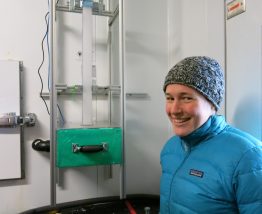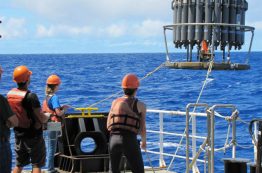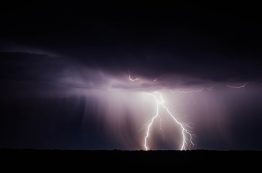Scientists know a lot about the Earth’s climate. Over the past sixty years, they have collected temperature and precipitation information, measured the amount of carbon dioxide in Earth’s atmosphere, and charted the changing weather. But what if we want to compare today’s climate to past climates—say, a million years ago or more? Traces of those past climates—referred to as paleoclimates—remain in rocks and ice as particles that once made up the ancient atmosphere, rain and soil.
Read more »New study tracks sulfur-based metabolism in the open ocean
One of the planet’s most active ecosystems is one most people rarely encounter and scientists are only starting to explore. The open ocean contains tiny organisms — phytoplankton — that perform half the photosynthesis on Earth, helping generate oxygen for animals on land. A study by University of Washington oceanographers, published this summer in Nature Microbiology, looks at how photosynthetic microbes and ocean bacteria use sulfur, a plentiful marine nutrient.
Read more at UW News »Washington leads: connecting ocean acidification research to people who need it most
At the helm of EarthLab’s Washington Ocean Acidification Center are two experienced ocean scientists, but what they are trying to do is something entirely new. Terrie Klinger and Jan Newton are Salish Sea experts — one an ecologist, one an oceanographer — and they are addressing one of the biggest emerging threats to our environment today, ocean acidification. “When we first were funded by the legislature to stand up the Washington Ocean Acidification Center, there was no precedent.
Read more at UW EarthLab »UW atmospheric scientists to study most extreme storms on Earth, up close
Two University of Washington atmospheric scientists—Angela Rowe and Lynn McMurdie—are leaving for a weeks-long, firsthand study of some of the fiercest storms on the planet. They will participate in RELAMPAGO, an international campaign in Argentina to monitor storms that occur east of the Andes near the slopes of another mountain range, the Sierra de Córdoba. The international team hopes to better understand how convective storm systems — the big systems that unleash torrential rains, hail and lightning — initiate and grow as they travel from the mountainous terrain eastward over the plains.
Read more at UW Today »High CO2 levels cause plants to thicken their leaves, which could worsen climate change effects, researchers say
New research finds that plants with thicker leaves may exacerbate climate change impacts because they would be less efficient in sequestering atmospheric carbon.
Read more at UW Today »





